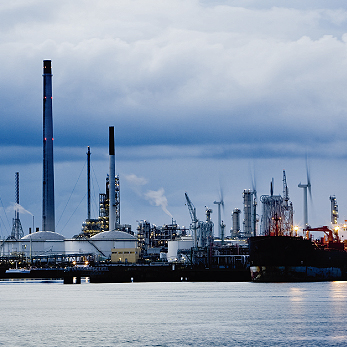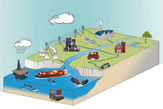What are the problems?
A wide range of sources and environmental pathways
Hazardous substances are found in seawater, sediments and marine organisms throughout the North-East Atlantic. Near heavily populated and industrialised areas, concentrations in sediments and marine organisms can threaten marine life and exert various biological effects. Contamination can reach levels at which fish and shellfish are not safe for human consumption and their marketing is prohibited by food safety regulations.
The area covered by the OSPAR Convention includes many of the major centres of industry and population in Western Europe. It is here that most man-made and naturally occurring substances, some of which are hazardous to the marine environment, are released, either as emissions to air, discharges to water or as losses during the lifecycle of products. These substances are transferred to the North-East Atlantic along a range of environmental pathways Figure 5.1. Historic pollution in riverine, estuarine and marine sediments acts as a continued source of release, especially when sediments are moved by currents or disturbed by human activities.
Depending on the physical and chemical properties of the hazardous substances, environmental changes resulting from global warming will alter the pathways of these substances. Warming of the atmosphere may lead to more evaporation and transport of contaminants by air, rainfall may increase and flooding may result in higher run-off from land and more river inputs. Increased storminess may result in additional remobilisation of contaminants from marine sediments. Changes in food web structure may affect contaminant pathways.


